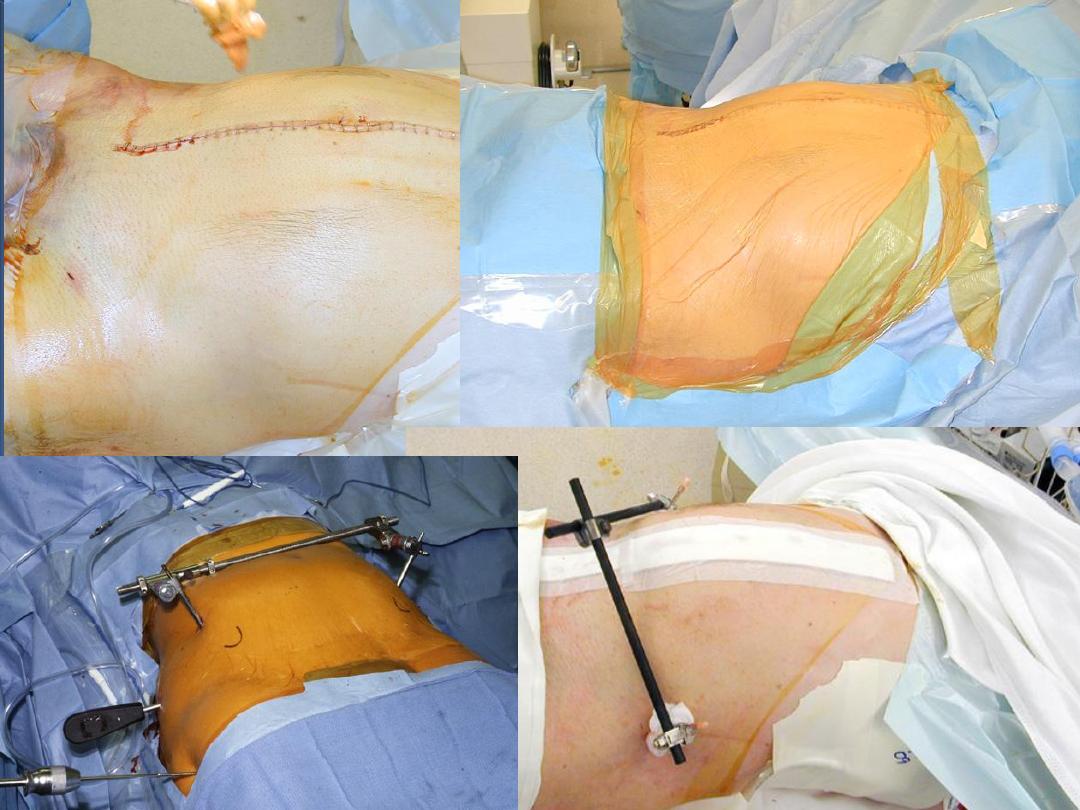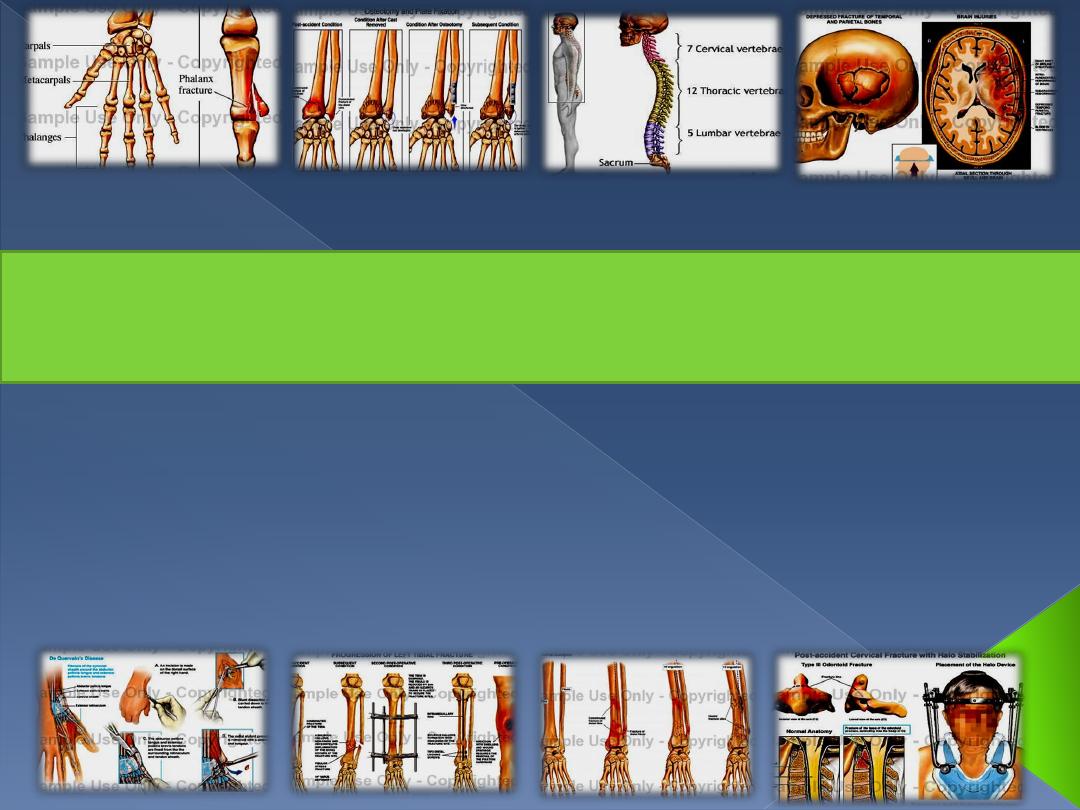
Injuries of the pelvis
Dr. Jamal Al-Saidy
M.B.Ch.B F.I.C.M.S
Assistant Professor and Consultant Orthopaedic Surgeon
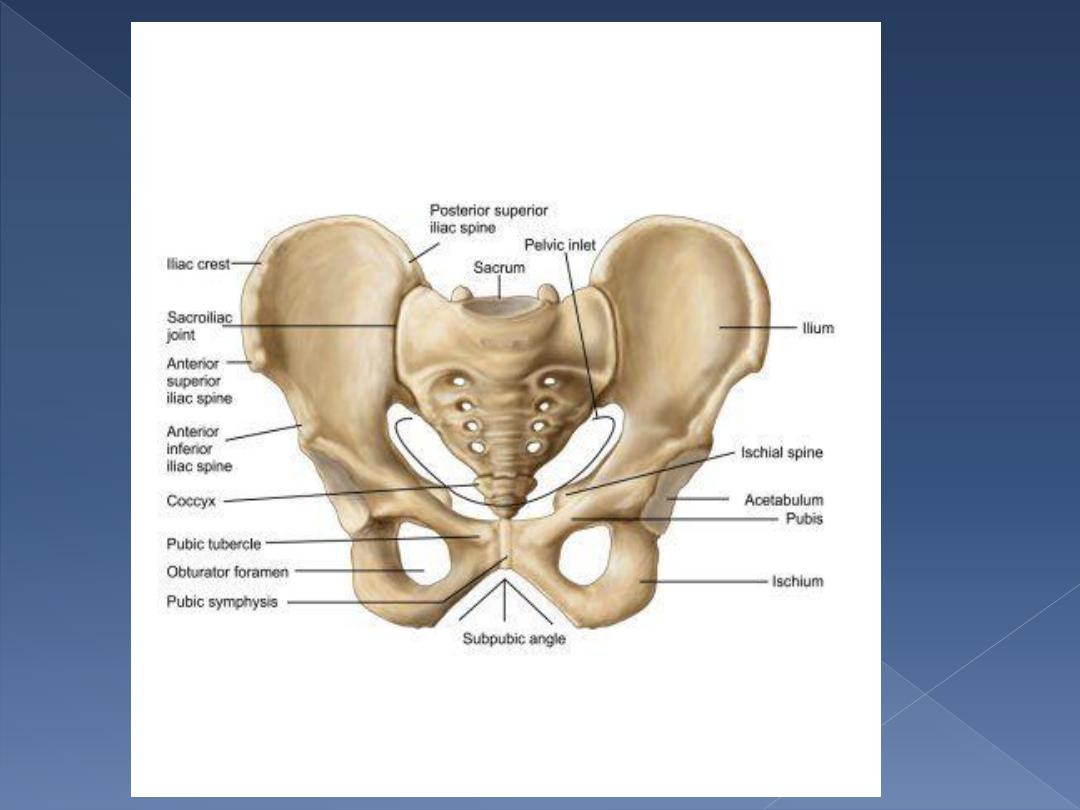
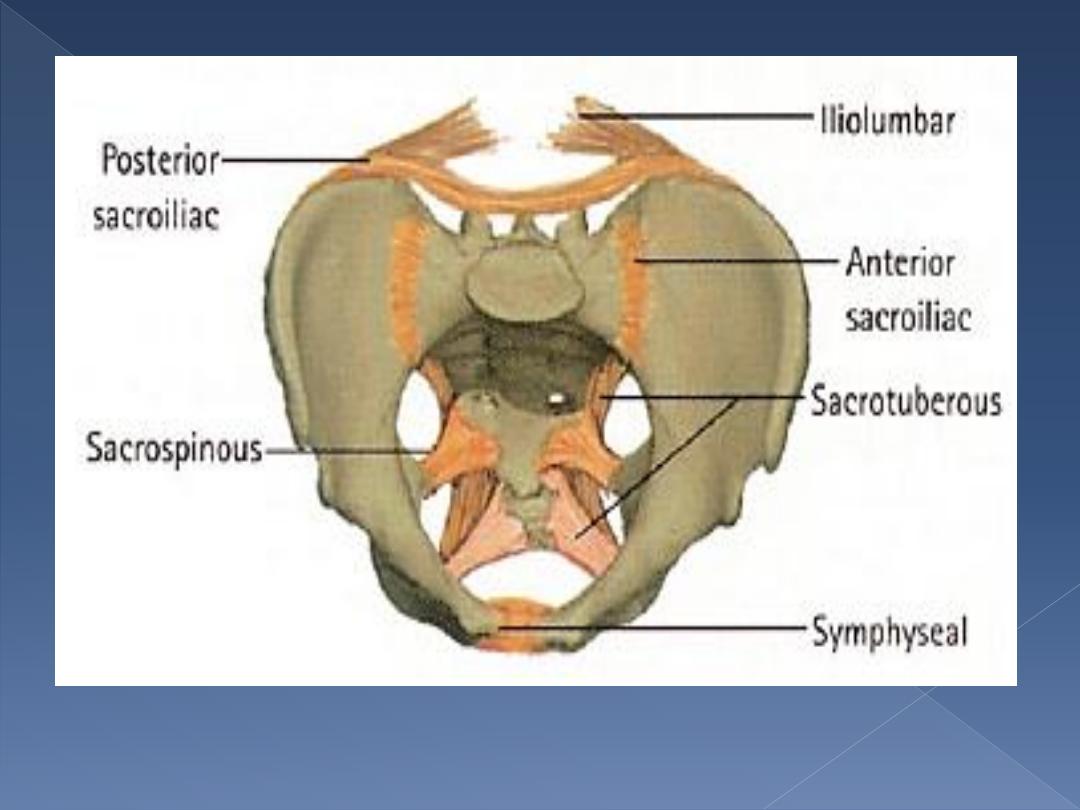
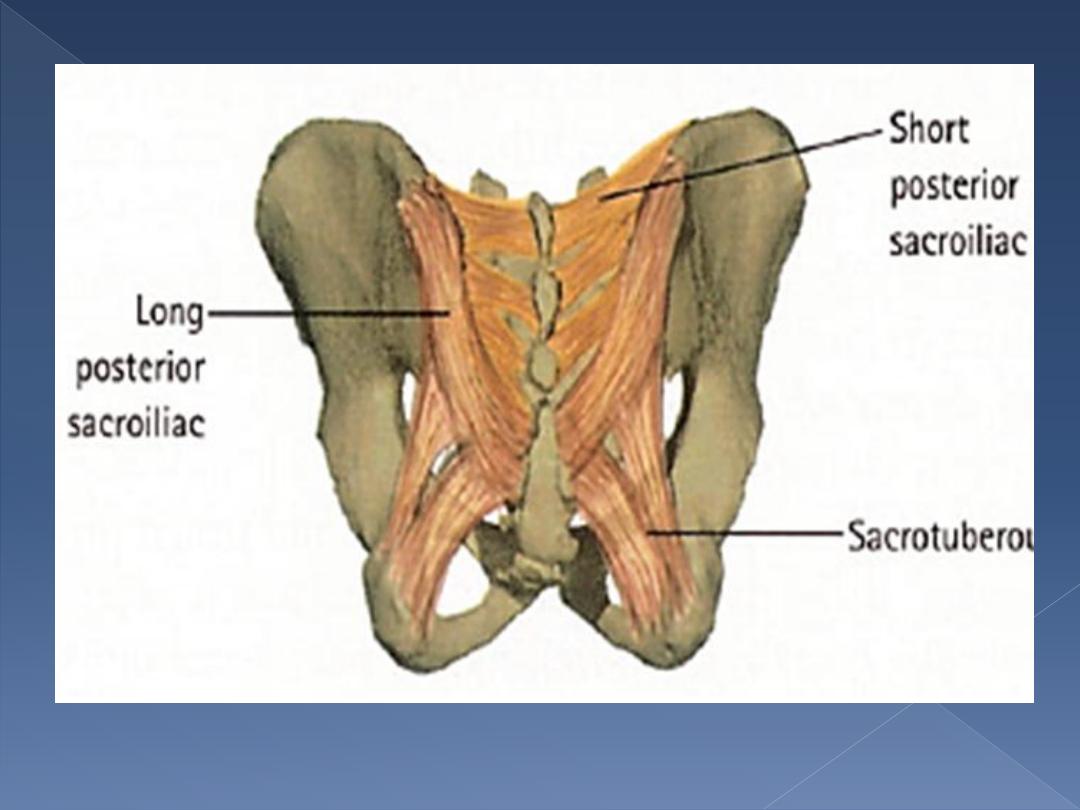

Injuries of the pelvis
•Pelvic Fractures account for less than 5% of all skeletal injuries.
• Important : because of serous complication
associated Soft tissue injuries
severe blood oss
Shock
Sepsis
A.R.D.S(adult respiratory distress syndrom)
• About two-third of all Pelvic Fractures occur in road traffic accident.
•10 % will have a visceral injuries with mortality rate is probably 10%.

Pelvis transmits weight from the trunk to the lower limbs and
provide protection for the pelvic viscera, vessels and nerves
Branches of common iliac vessels
Branches of lumbosacral plexus
Urethra & bladder:
In females the urethra is much more mobile so less prone to injury
.
Rectum & anal
The rectum and anal canal are more firmly tethered, so vulnerable to injury. The pelvic
colon , with its mesentery , is a mobile structure and so not readily to injury.
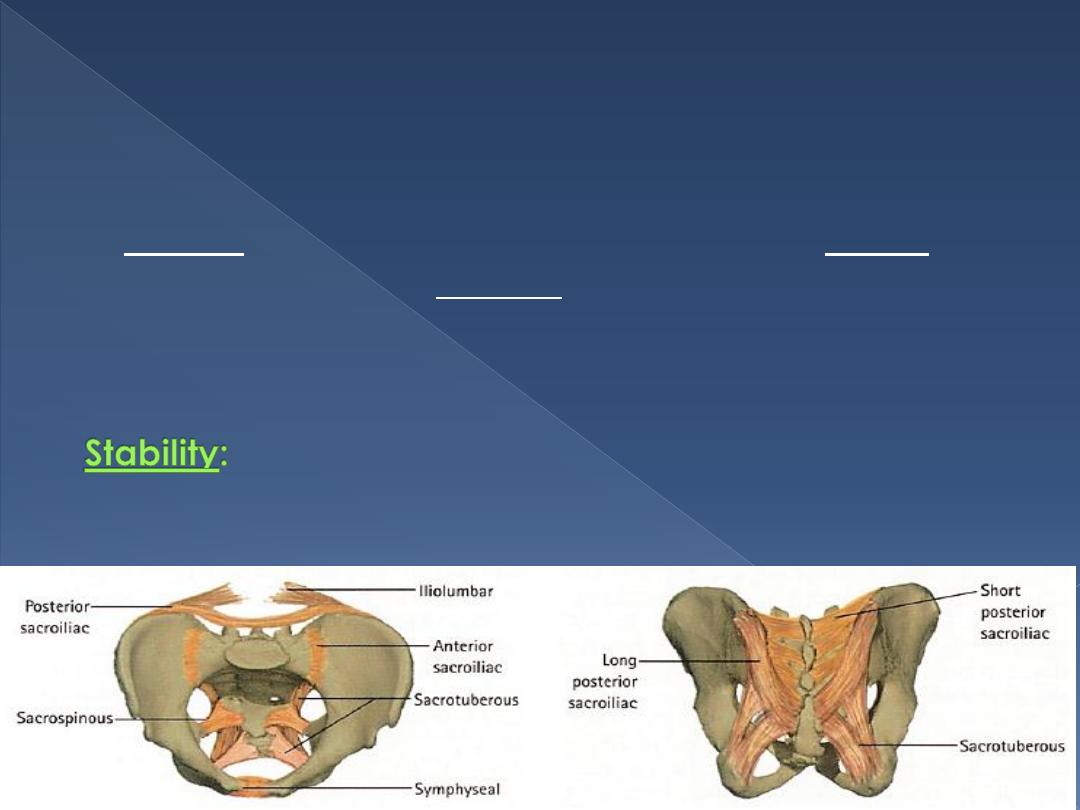
Surgical anatomy
Pelvic ring: is made up of the 2 innominate bones + the
sacrum, articulating in front at the symphysis pubis and
posteriorly at the sacroiliac joint.
The stability of the pelvic ring depends upon the rigidity of the
bony parts and the integrity of the strong ligaments.
Sacroiliac ( anterior & posterior )
Sacro-tuberous
Sacro-spinous
Ligaments of symphysis pubis
Stable pelvis : can withstand weight bearing
without displacement
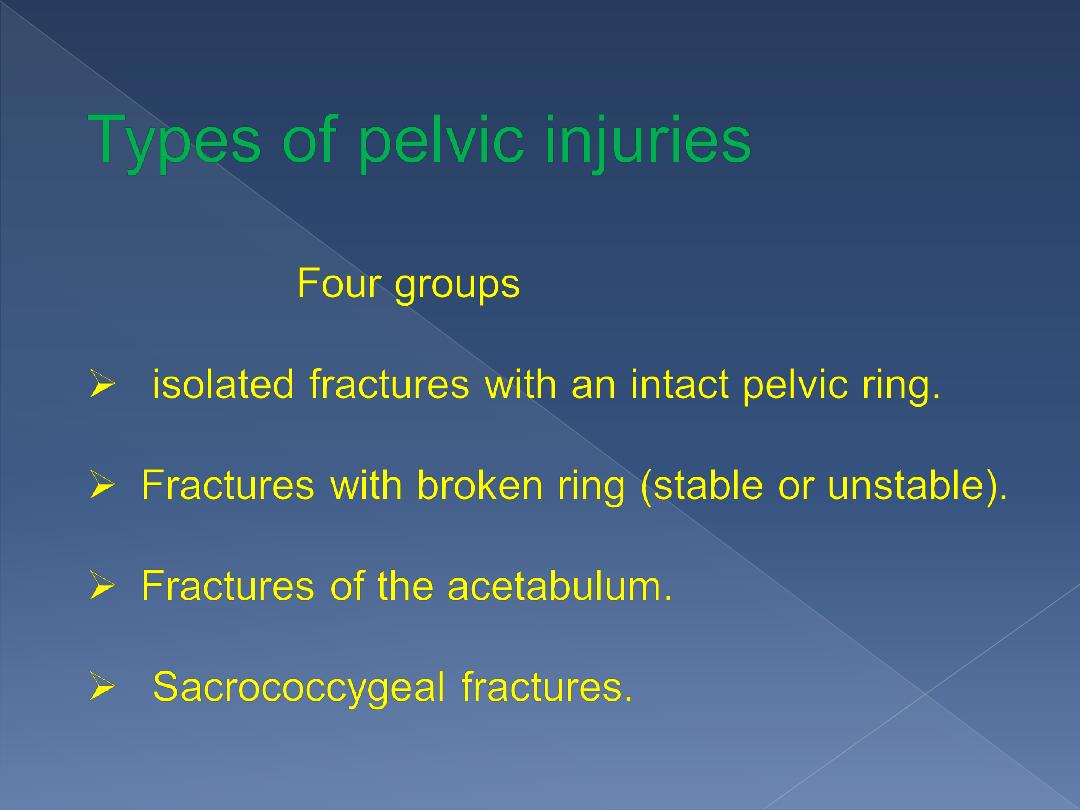
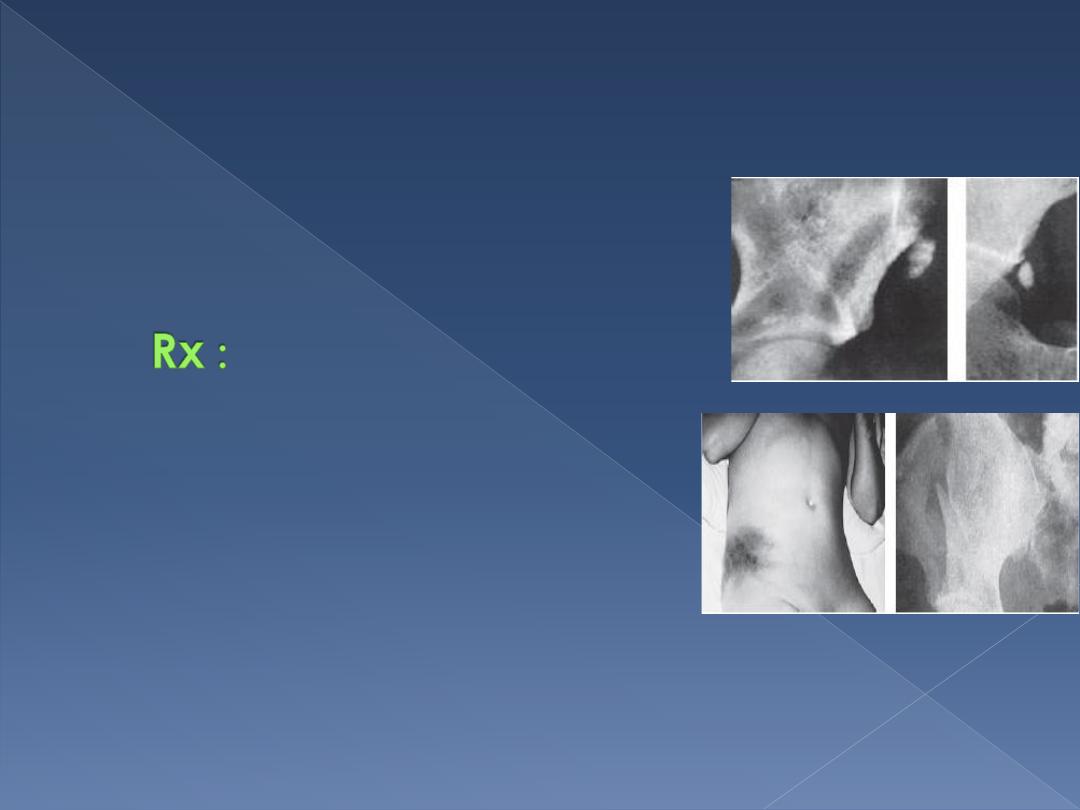
Isolated fractures : 3 types
Avulsion #s
Direct fractures
A direct blow to the pelvis , usually F.F.H
may fracture the ischium or the iliac blade.
need only bed rest until pain subsides.
Stress fractures
A piece of bone is pulled off by violent muscle contraction seen in
sportsmen and athletes. e.g.:-
• ASIS(anterior superior iliac spine): Sartorius
• AIIS :(anterior inferior iliac spine): rectus
• Pubic tubercle : adductor longus
• Ischial tuberosity : hamstrings
Analgesia & bed rest few days
•
Fracture of the pubic rami are common.
• In osteoporotic or osteomalacic patients
• Cause of sacroiliac pain in elderly osteoporotic individuals.
• Stress fractures are best demonstrated by radioisotope scan.
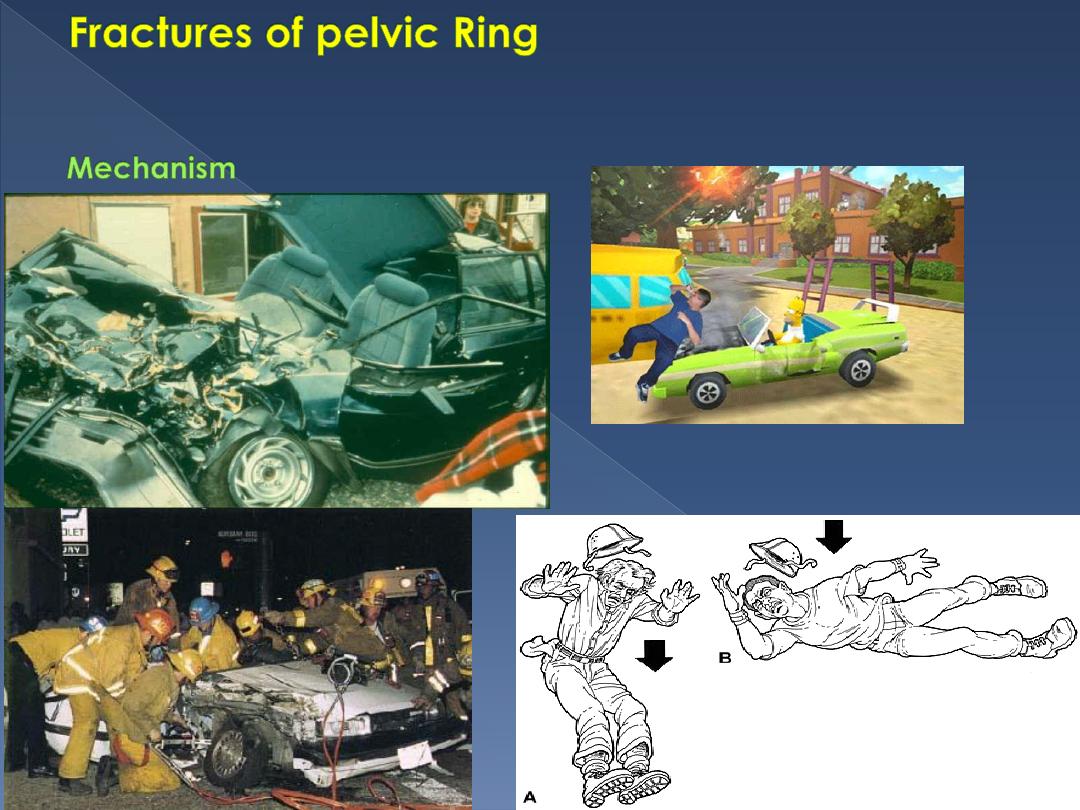
Pelvis is a rigid ring fracture in one point must be associated with
disruption at another point except in children
RTA
FFH

According to direction of force :
APC
( anteroposterior compression)
LC
(lateral compression)
VS
(vertical shear)
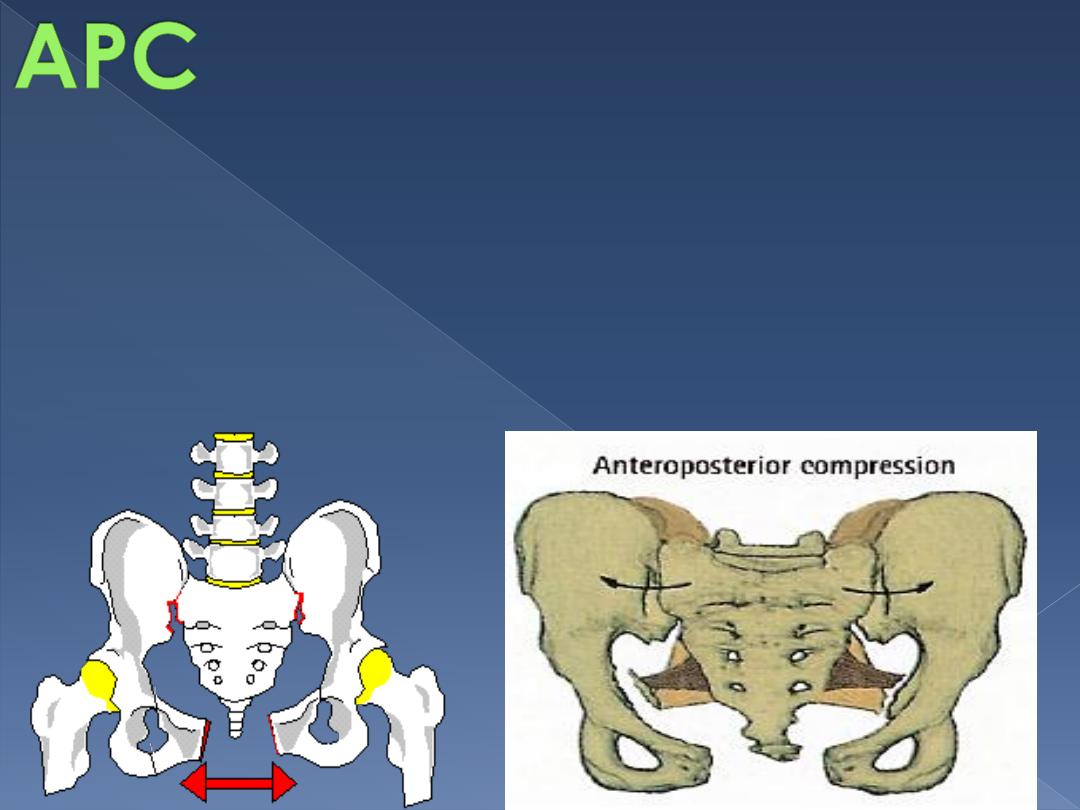
frontal collision open - book injury : diastasis of symphysis
pubis or # of pubic rami
innominate bones are externally rotated
Posteriorly : injury of ligaments of sacro-iliac joint
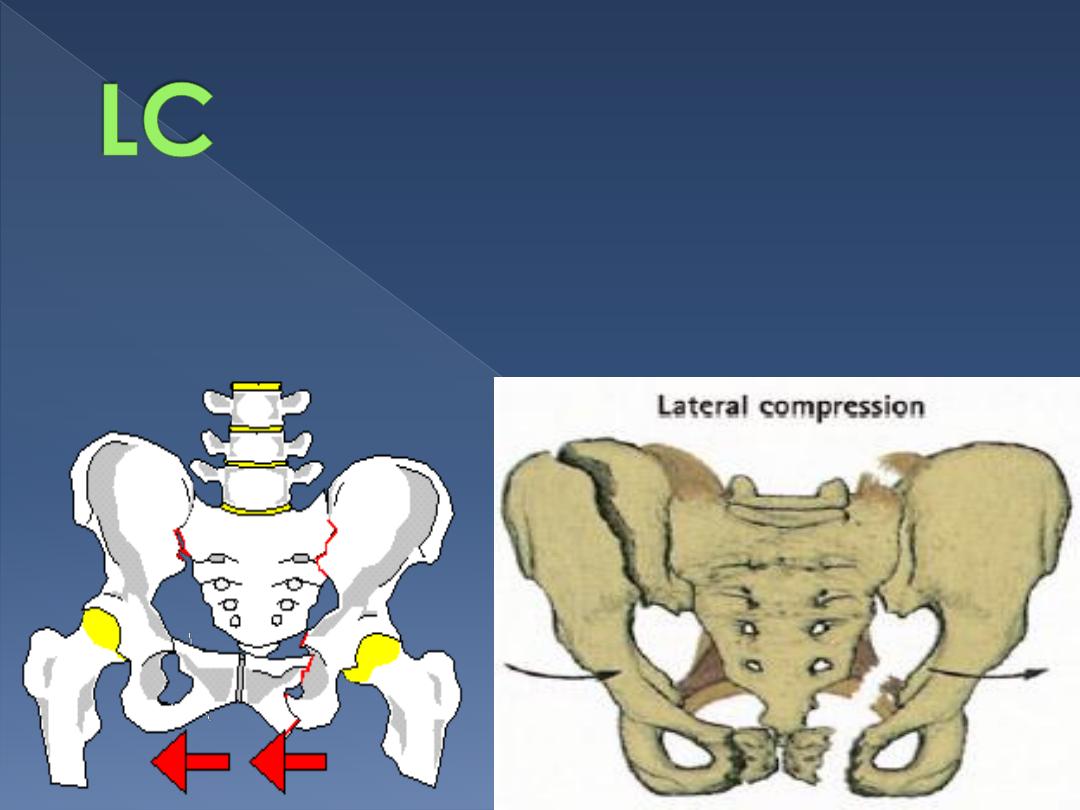
•Side to side compression, causes (buckling
# of pubic rami +
a severe sacroiliac strain or a fracture of the sacrum or ilium. .
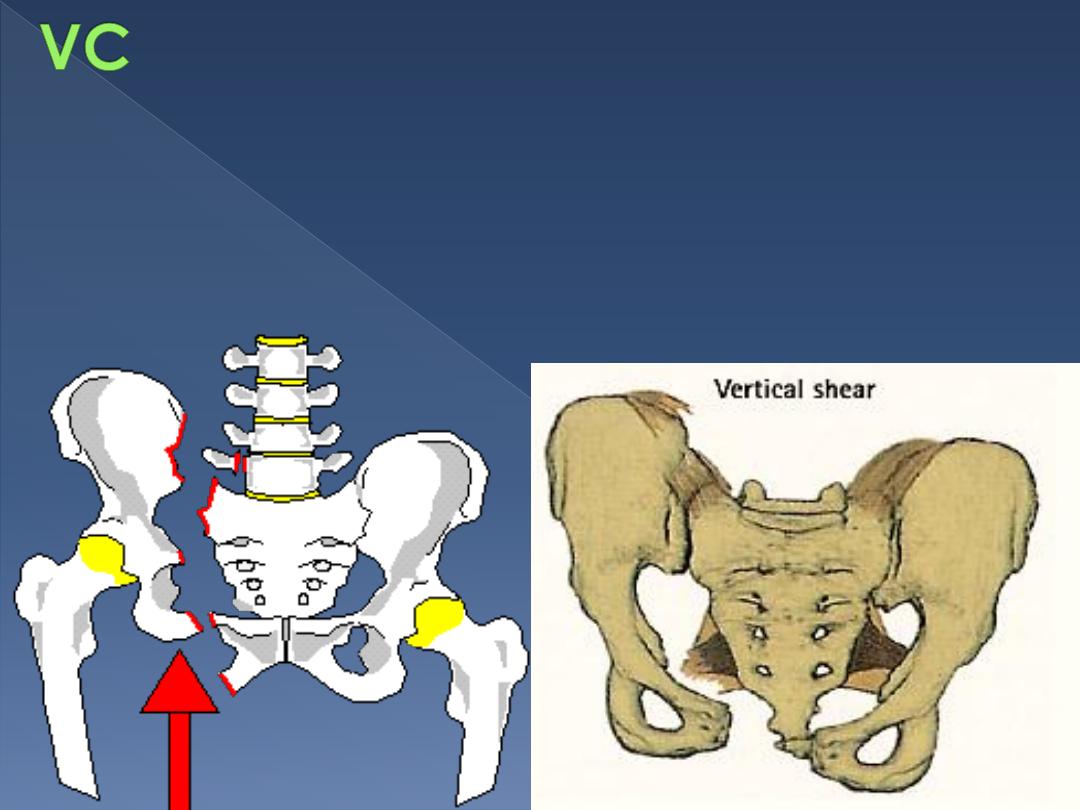
• upward displacement of the hemipelvis
Occur typically when someone falls from a height onto
one leg.
•
These are usually severe, unstable injuries with gross
tearing of the soft tissues and retroperitoneal
haemorrhage.
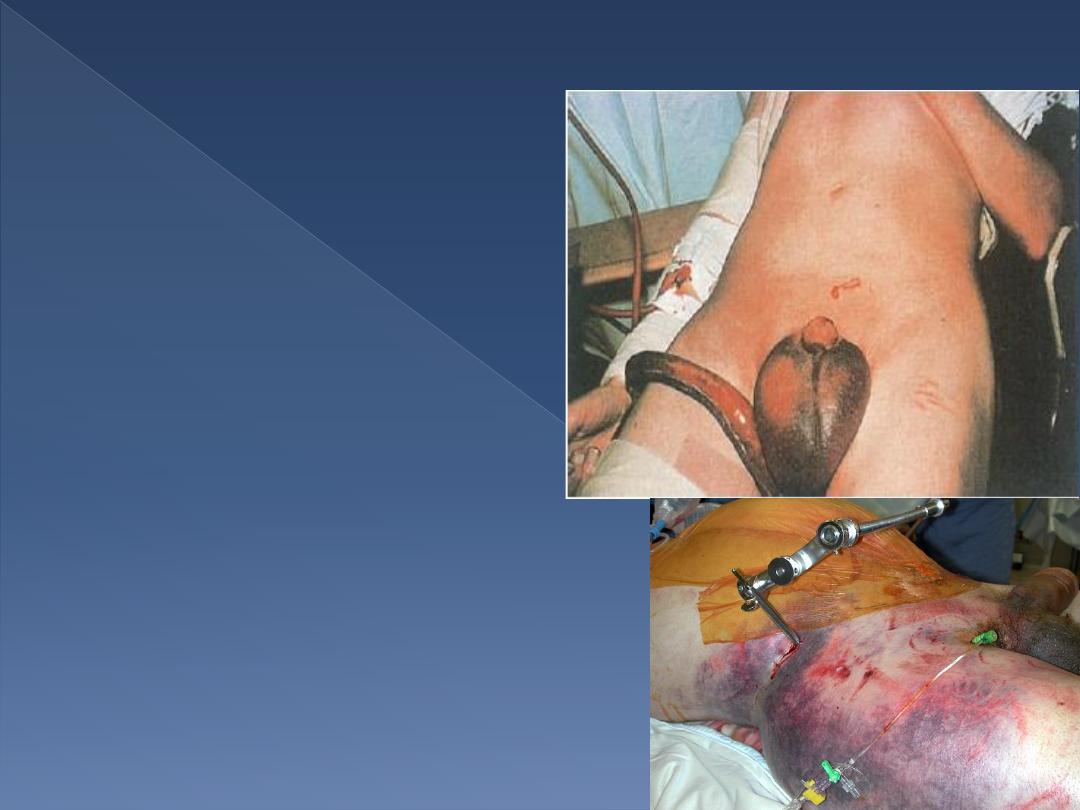
Clinical assessment & Evaluation
suspected in every patient with serious abdominal or lower limb injuries
History of R.T.A. F.F.H, Crush injuries
Swelling or bruising of the lower abdomen, thighs, perineum, scrotum or the vulva.
Evidence of extravasation of urine.
Rectal examination.
Coccyx, sacrum can be felt and tested for tenderness.
High prostate suggests a urethral injury
Inability to void urine and blood at the external meatus are the classic features of a ruptured
urethra,
absence of blood at the meatus does not exclude
a urethral injury.
The patient can encouraged to void, if able to do so,
it is either the urethra is intact or there is only minimal
damage.
No attempt catheterization.
retrograde urethrography.
Neurological examination is important .
If the patient is unconscious , the same routine is followed.
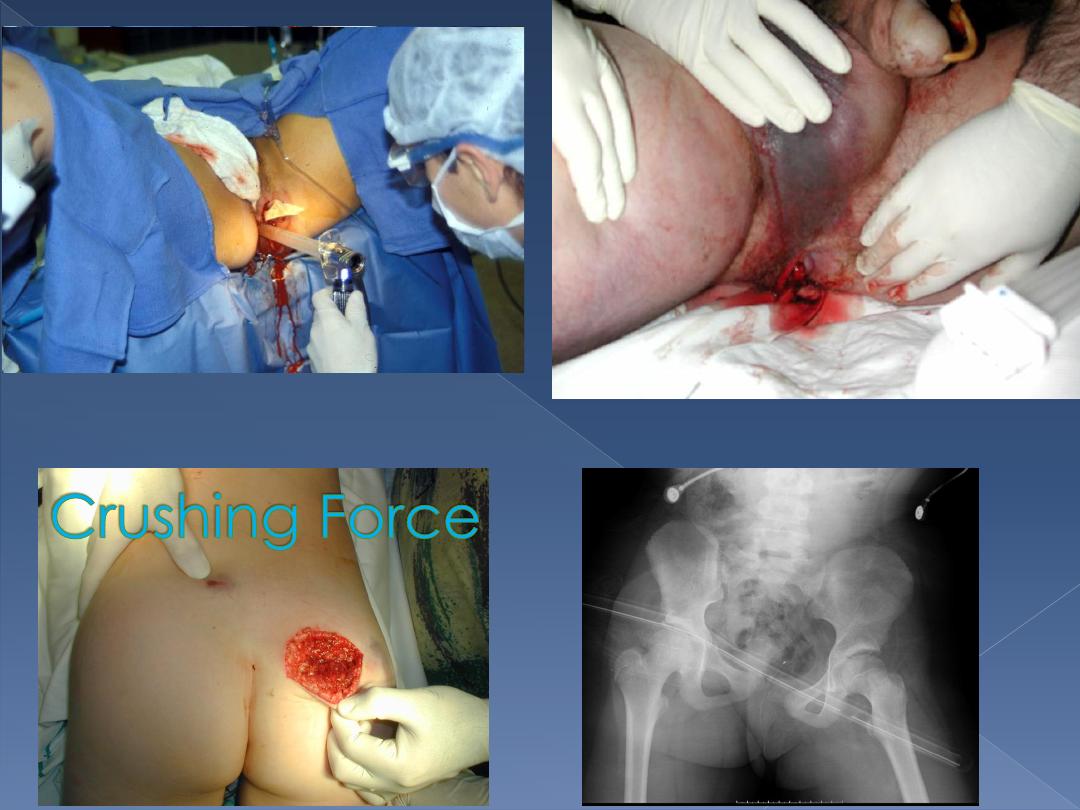
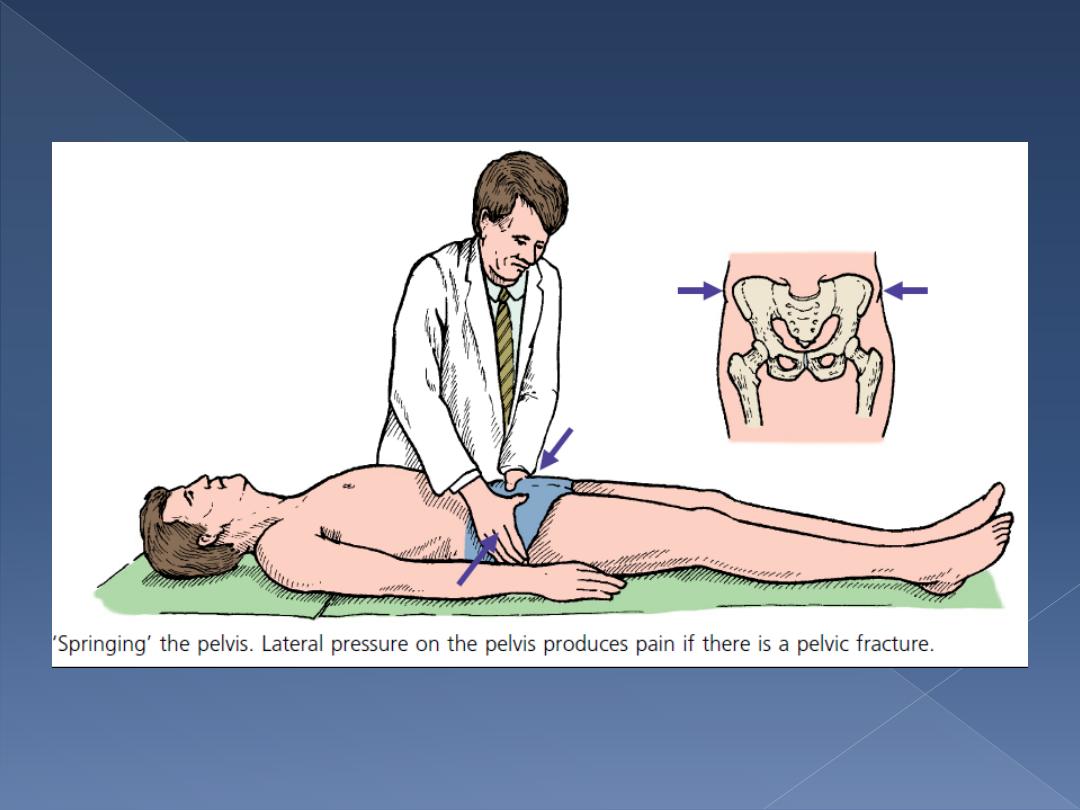
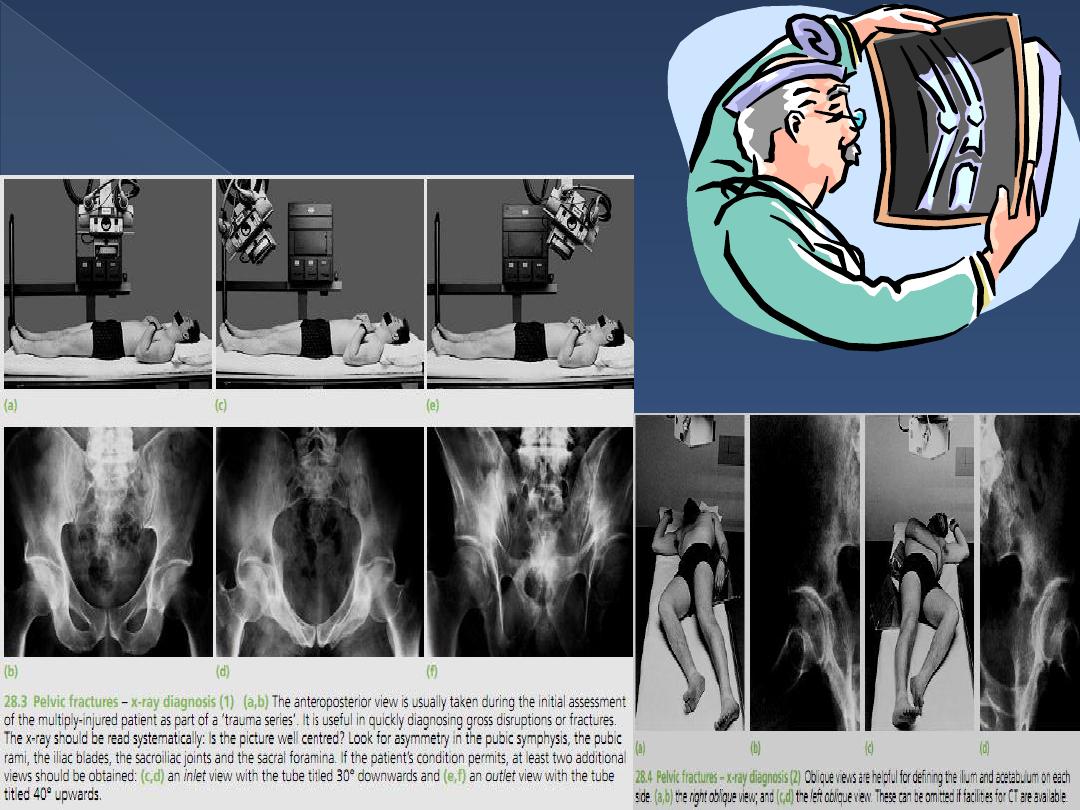
Imaging of the pelvis
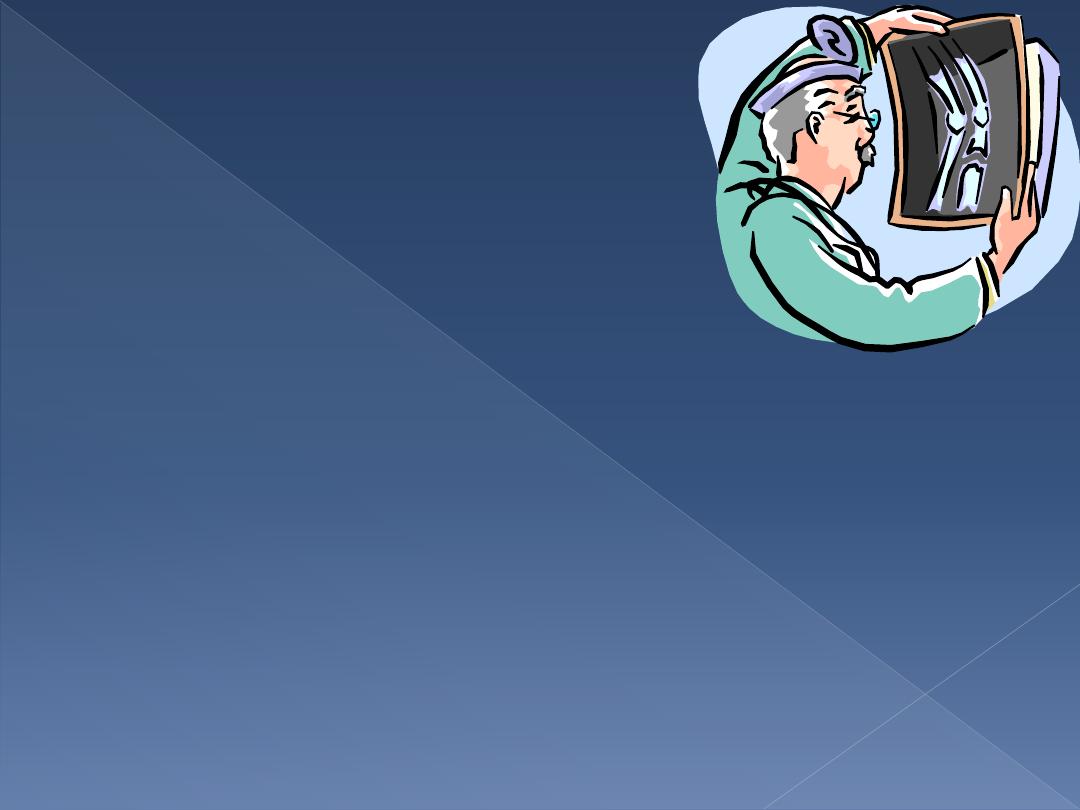
Imaging of urinary tract:-
intravenous urogram:- renal injury.
Urethrogram:- urethral injury.
Cystogram:- rupture of the bladder
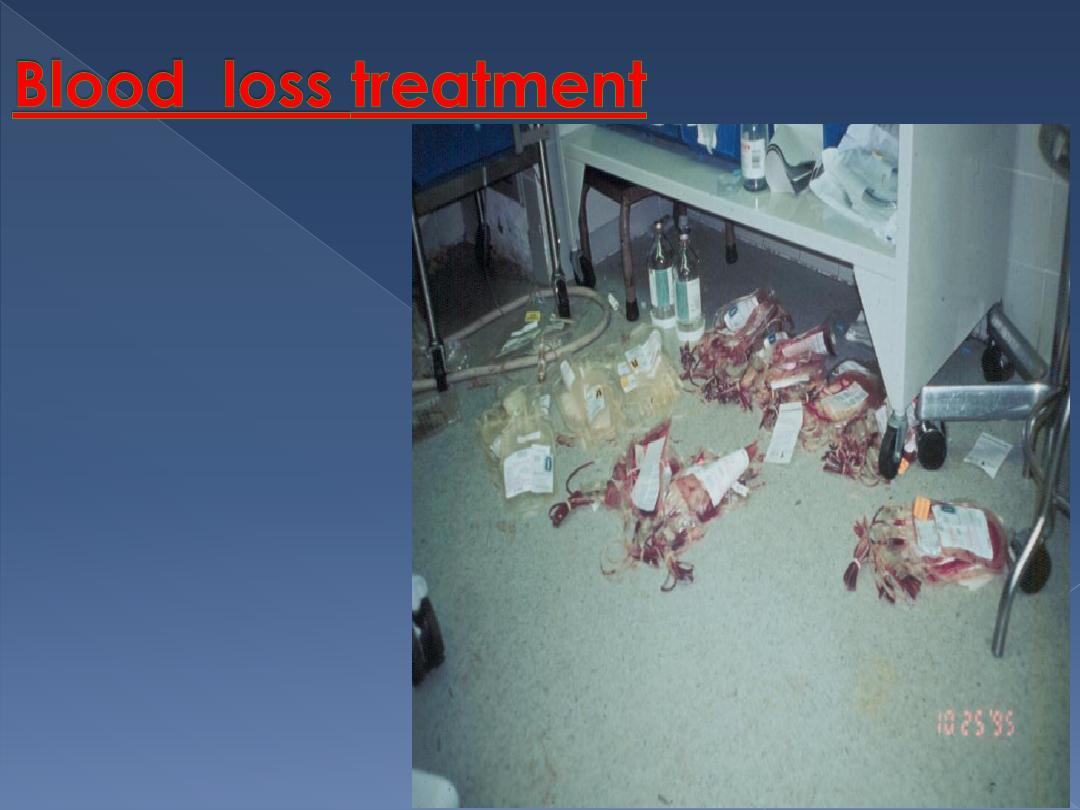
General treatment of
shock
Pelvic sling
External fixation
Laparotomy
Embolization
Retroperitoneal
haemtoma should not be
evacuated
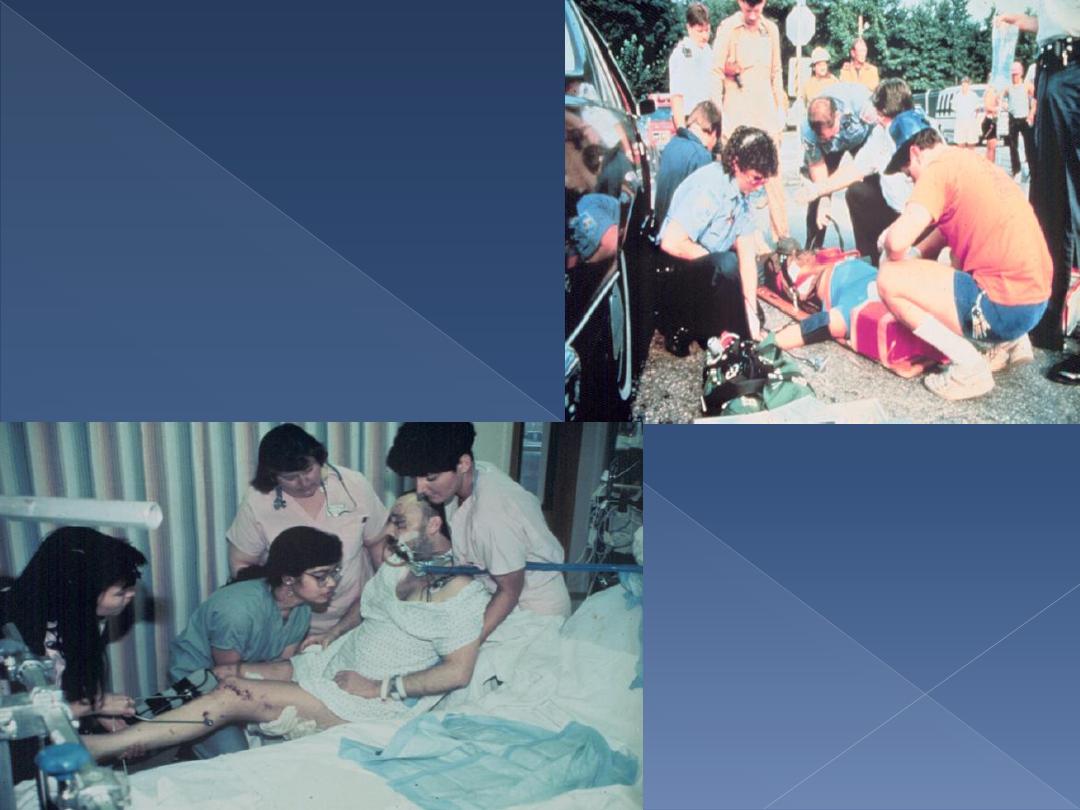
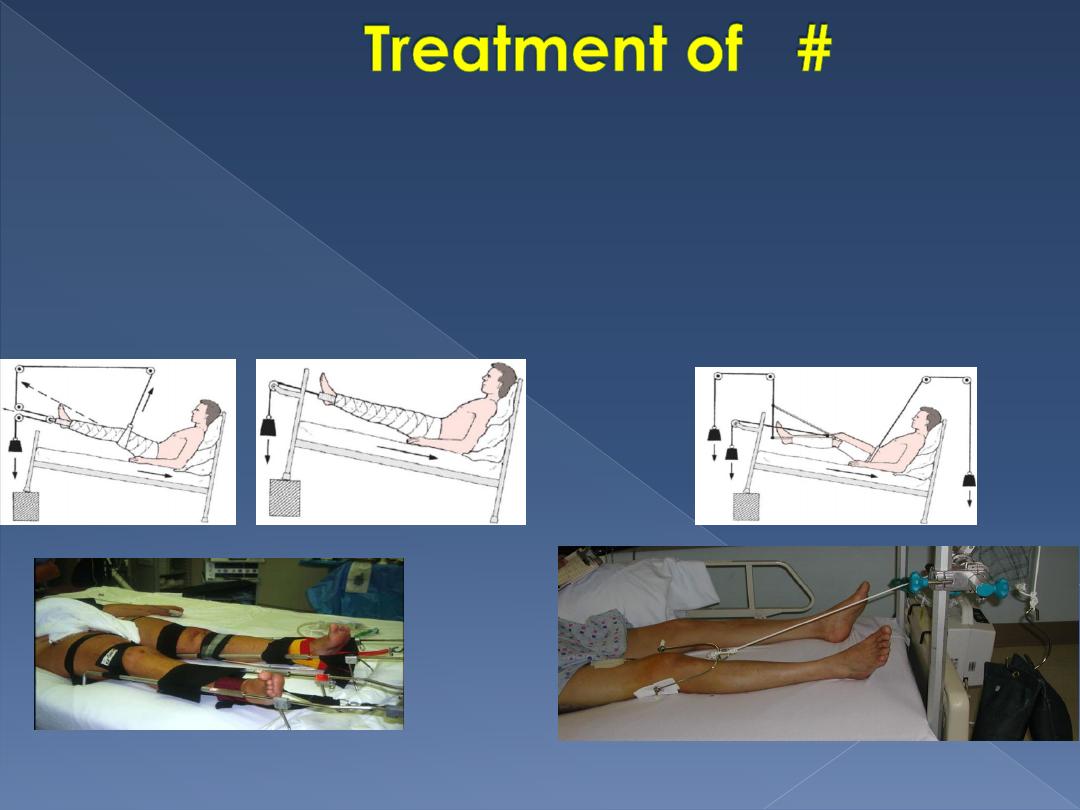
Bed rest
Traction
Skin
Skeletal
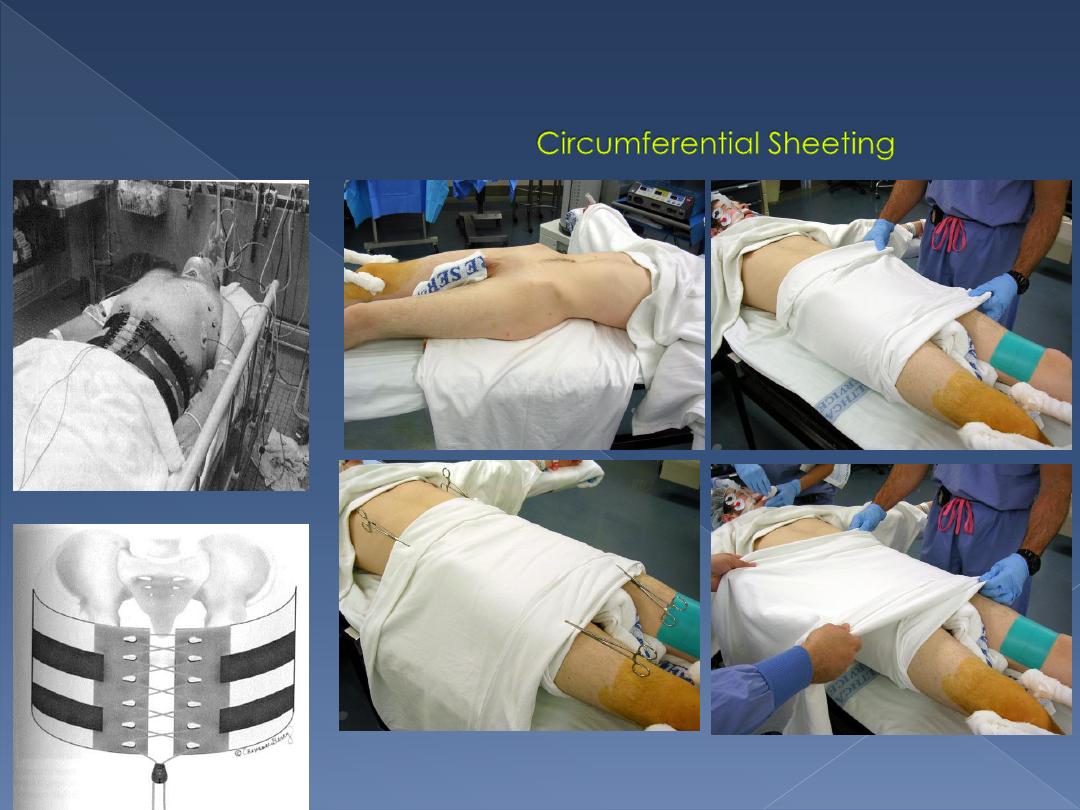
Pelvic sling
Pelvic Binders
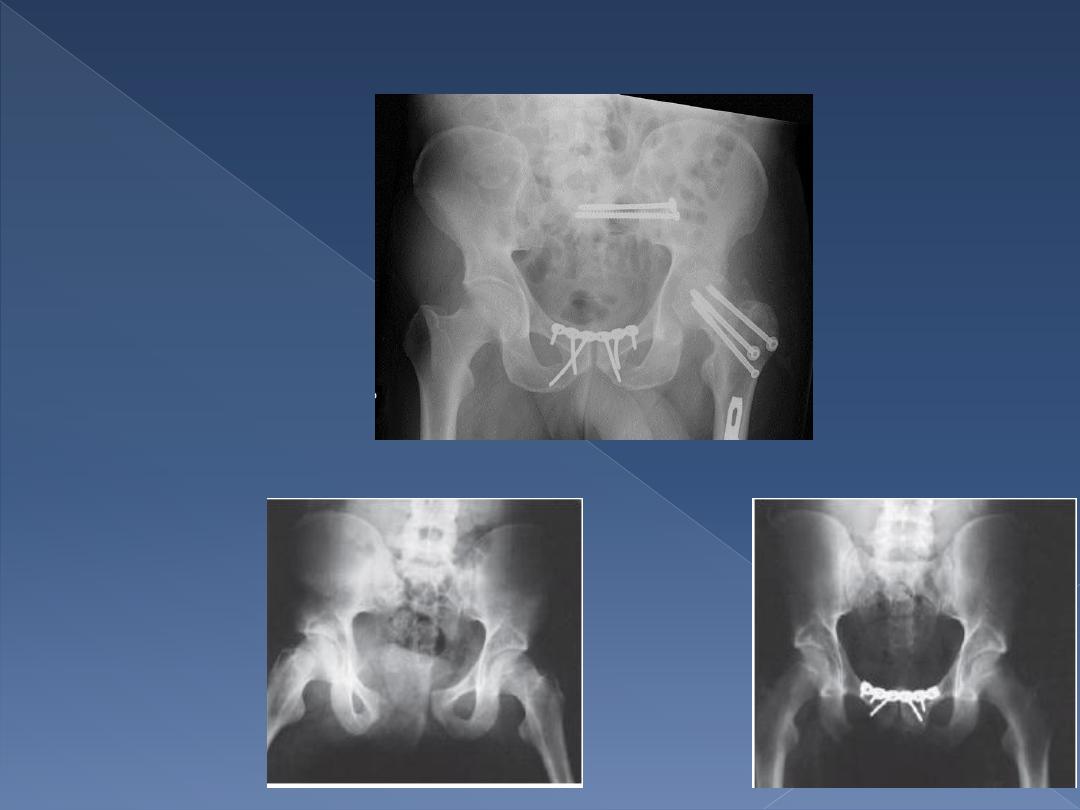
Internal
Fixation
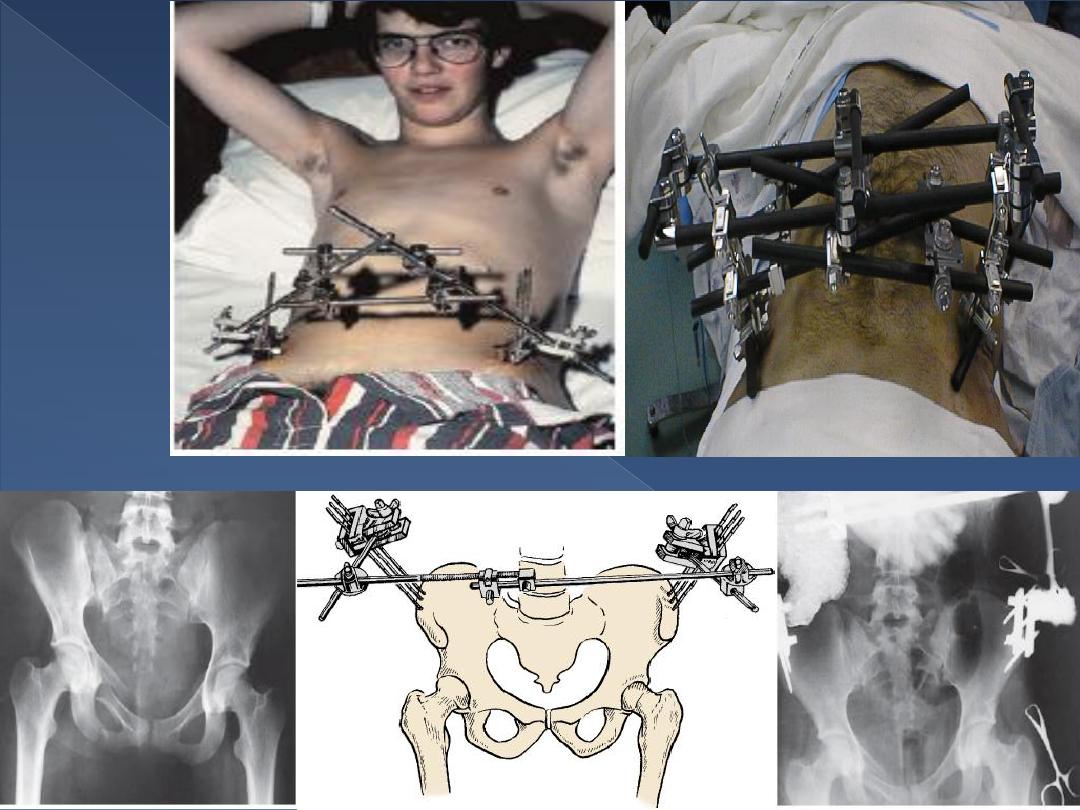
External
Fixation
